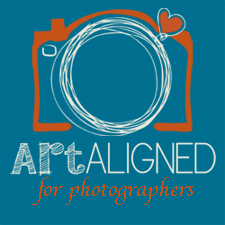For the last couple of weeks, I’ve been taking art clay silver classes with Auckland jewelry artist Alison Boyce. I’ve definitely caught the jewelry making bug, and I love this medium in particular. Whether for simple earrings or a complex project you’d think would require silversmithing skills, art clay is a versatile and, frankly, game-changing medium for the jewelry industry. I find this very interesting on a personal level because many photographers complain about the effect of easy-to-use cameras and digital technology on their industry. My recent experience with art clay silver indicates that disruptive technologies are impacting all industries, and that everyone needs to be cognizant of how these technologies could and are changing their own field. So, photographers, don’t feel unjustly persecuted; it’s happening everywhere!
Alison has a background in traditional jewelry methods, but now works primarily with art clay silver, copper and gold. Over three lessons together, she taught me how to make simple designs using only clay, as well as more complicated pieces utilizing clay, paste, syringe and wire materials. Each piece was based on my ideas and aesthetics, and she beautifully tailored her instruction to help me bring my vision to life using her solid understanding of design and implementation.
My first attempt: A simple pendant
At our first lesson, Alison introduced me to art clay silver 650, a mixture of pure silver particle, water and various binding agents. During drying and firing, the other materials evaporate or burn off and the silver particles solidify, leaving behind fine silver (99.9%; compare against sterling at 92.5%).
The clay initially felt like Play-doh, although it’s a lot more expensive per gram. After removing it from an airtight pouch, I rolled it out onto a piece of wax paper, used some molds and punches to create shapes, and stacked them to create a circular, flower-themed pendant. When I was reasonably pleased with the design, we put the piece in a food dehydrator to speed drying time and then I sanded it for a smooth(ish) finish. Next it went into the kiln for five minutes at 800-degrees Celsius (1472 Fahrenheit). Once the pendant had cooled, we punched a hole at the top for stringing and Alison sent me home with my new treasure. She also asked me to ponder whether I wanted to do anything more to it on another day. One of the benefits of art clay is that it can be kilned multiple times without breaking down (a benefit I found immensely valuable on my second piece, but more on that later).
Between classes, I decided to apply liver of sulfur to my pendant to create some contrast and bring out the texture in the background, so we started our second lesson there. The sulfur pretty quickly turned the whole piece black; I had to polish and burnish the parts where I wanted to restore a satiny and shiny silver finish.

Take two: Five firings and one sore thumb
The remainder of my second class was dedicated to creating a pair of silver basket earrings I saw in one of the books Alison lent me. The earrings began with molding and drying two spherical pieces of cork. If you’ve ever tried to make two identically sized and shaped spheres from scratch, you know how hard it is. I then used syringe-type art clay to create an open, textured finish around the balls. That is where the sore thumb comes in. I was surprised by how challenging it was to apply firm pressure to cover the small surface area. In fact, I started to feel like a wuss, taking frequent breaks and eventually changing back and forth between my right and left hand to complete the project.


Alison wrapped the spheres to protect their structure and into the kiln they went. During firing, the cork burned off, leaving behind a hollow sphere. Once they’d cooled, I started polishing only to discover that bits of the fragile spheres were breaking off, leaving behind large holes and threatening to collapse the entire piece. Alison said, “Not to worry;” we applied more clay and sent them back into the kiln. After a second firing, it happened again. Alison investigated and helped to repair the damage, commenting that the clay syringe I’d been using seemed more stiff than usual — a nice reassurance for my ego and thumb, which were still reeling from the earlier challenge.


In the end, one of the earrings had to be repaired and kilned five times before it would maintain its structural integrity; the other managed to hold up after three go-rounds. I’m quite happy with the end results, but I was nervous and skeptical for a while. And my thumb was sore for a week! Crazy, right?!

Project three: A little ambition goes a long way
During our re-kilning downtime in lesson two, Alison and I discussed my third project. I love New Zealand paua shell (abalone) and wanted to create a ring using it. Alison had a shell collection on hand, having used it for prior work, and allowed me to choose some for my ring.
We started the process with a ring maker, a plastic disk through which art clay is pushed to create a solid ring. Alison prefers ring makers to rolled clay, she said, because it avoids a seam and thus a potential weak point in the finished product.
For homework, I fit some cork to the bottom of my chosen paua shell. At my third lesson, we covered the dried cork with rolled clay to create a ring shank. So that the cork could burn out during firing, we punched a hole in the top of the shank — the side that would be hidden underneath the shell. We then strategically placed fine silver wire around the base to serve as prongs and secured them with syringe-style clay.


In the interim, Alison fired the ring base with a ceramic stopper to keep it from shrinking beyond our targeted size. I took advantage of the down time and some leftover clay to make a quick pair of earrings. After the fiddling required with the basket earrings and ring, it was a relief to tackle a simple project again.

After the first firing, we affixed the ring shank to its base, dried everything together and put it in the kiln for 30 minutes at 600-degrees Celsius. Due to the kilning time, we agreed to meet the next day to wrap up my projects.
I returned the following morning to a beautifully polished, perfectly fitting ring base and a new earring set — Alison had polished and tumbled the projects for me while I was gone. She then showed me how to set the paua shell (which was too heat sensitive to fire with the ring itself) and to close the prongs. At last, I had completed a one-of-a-kind ring, thanks to a little inspiration and Alison’s significant technical know-how. Love, love, love it!

I’m so glad I had the opportunity to meet Alison and her husband, Richard, (and of course their official greeter, Charlie), and to learn the art of silver clay. It’s definitely one of the highlights from my Auckland experience!

Have you done anything recently to feed your creative spirit? What was it?
Ta,

















September Art Social » KateWatson.net - […] I had taken private lessons in Auckland, I didn’t want to repeat the beginner class. But, I’m excited for all of us to continue […]
Kate - Thank you, Dawn! I love them.
Dawn - You should be really proud – these are so stunning, Kate!